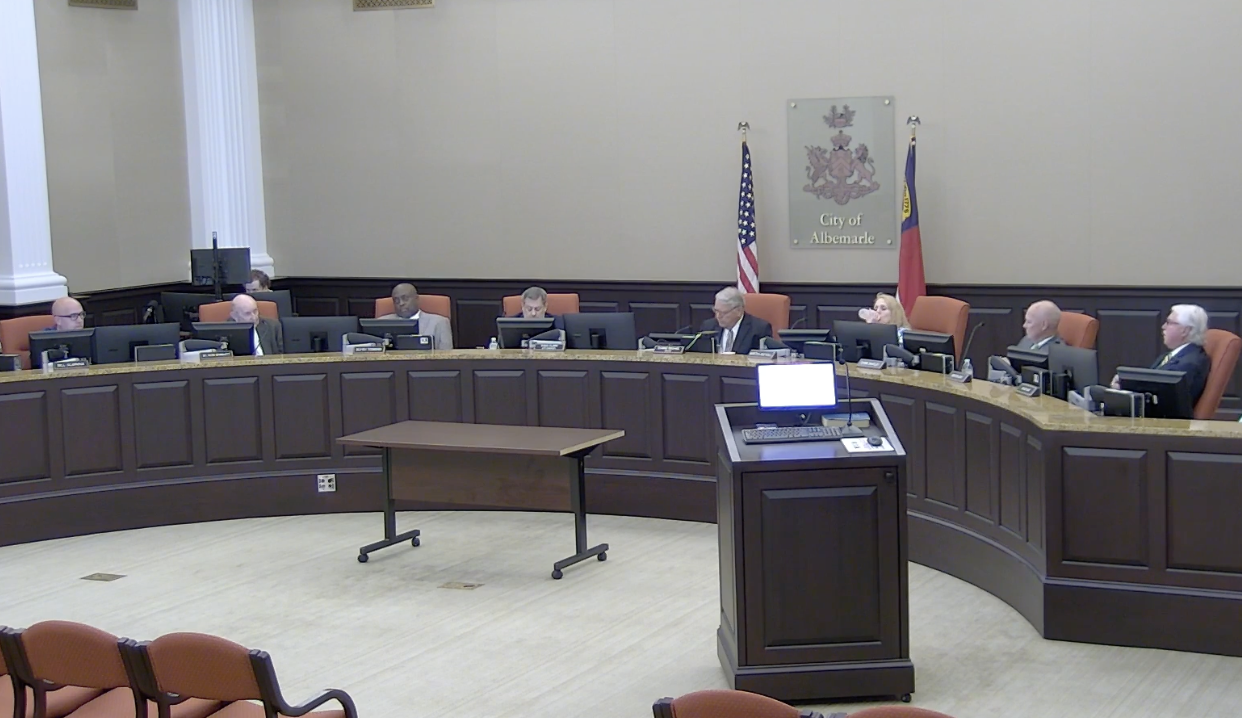Mike Walden Column: Can small towns make a comeback?
Published 2:20 pm Tuesday, November 27, 2018
North Carolina was once known as a state of small towns. The reason was the state economy. Led by the “Big Three” of tobacco, textiles and furniture, the economy was organized around small towns. Farmers took their crops and livestock to the closest town for processing and sale. Textile mills often located near rivers and streams for power and built small villages for their workers. Small towns in the foothills close to the state’s large forests were home to the furniture makers.

Mike Walden
Small towns in North Carolina were so popular that almost half the major league baseball teams in the 1940s had minor league teams in the state.
But the last 40 years can be called the “age of the big city” in North Carolina. Charlotte and the Triangle cities of Raleigh/Durham/Chapel Hill have been two of the fastest growing metropolitan areas in the country. These regions have graduated from the minor leagues to the major leagues — literally — with each now hosting major league teams.
Again, the shift from small town to big city has been based on economics. Tobacco, textiles and furniture are no longer the economic powerhouses they once were. Although still important, their dominance has been replaced by technology, pharmaceuticals, financial services and others.
These sectors have developed and grown in big cities, taking advantage of proximity to research-oriented universities and a continuous stream of college graduates.
So is our future one of the big getting bigger and the small getting smaller — that is, of our state’s big cities continuing to grow at the expense of our smaller towns?
A good case can be made for this outcome. For example, there are forecasts of Wake County in the Triangle and Mecklenburg County in the Charlotte region doubling in population from 2010 and 2050, while at the same time one-third of our counties — all rural — lose population.
Yet the future rarely moves in a straight line, and assuming past trends will continue can yield some of the worst forecasts. The simple reason is that trends often reach tipping points.
In fact, we may already be seeing some of those tipping points in our big cities. Traffic congestion is one of them. As big cities pack more and more people into the same geographic area, it’s a certainty the time we spend commuting will jump. Yes, projects are planned or underway to add road capacity and build forms of mass transit, but such projects take time — years — to complete.
Housing prices are another casualty of fast growing cities. Once again, it’s a matter of more people trying to squeeze into the same space. Everyone wants a convenient residential location in big cities to minimize travel to work, shopping and entertainment venues. Competition for these preferred locations automatically bids up prices per square foot and makes both houses and apartments more expensive.
It’s the tipping points of these two necessities — commuting and housing — that some futurists say may eventually take the luster off big cities and prompt the revival of small towns. If so, technology will play an important role is this new “small is beautiful” movement.
For example, telecommuting — which never had the take-off expected two decades ago — may now be at the point of lift-off. As technology has become more sophisticated, faster and upgraded with techniques like FaceTime and Skype facilitating face-to-face contact, telecommuting has enjoyed a surge.
Today, more people telecommute than use public transportation. Telecommuting could prompt a wave of workers and their families leaving the crowded, expensive big cities for the quiet and affordability of small towns.
But what about access to medical care, sophisticated shops and restaurants and big-time colleges? It’s hard for small towns to compete with big cities on these attributes.
Maybe not. Drone delivery of packages and food, remote medical care and online education — all sure to improve in quality and availability in years ahead — could allow small towns to have the best of both worlds — uncongested, affordable and yet with the amenities of the big places.
Is there any evidence of a “back to the small town” movement? The U.S Census reports that rural areas outside of big cities and their suburbs added population in the last two years for the first time since 2010. In North Carolina, over half of our municipalities with populations under 10,000 gained residents between 2015 and 2017.
Here’s a future to contemplate. The nation — including North Carolina — will still have an economy driven by big cities. Those choosing to live in big cities will be in multi-floor high rises or in high-density, low square footage cottage homes on the city edge. Cities will be surrounded by economically-linked “nodes,” or towns, where those choosing to commute will use automated vehicles. Many will telecommute. The towns will support lower-density living and quiet, unrushed lifestyles.
Is this what our state will look like in 2050? It’s possible. Much will depend on the technology of how we work, how we travel and how we obtain goods and services. But it will also depend on our individual choice of how and where we want to live.
In other words, we will decide.
Mike Walden is a William Neal Reynolds Distinguished Professor and Extension Economist in the Department of Agricultural and Resource Economics at North Carolina State University who teaches and writes on personal finance, economic outlook and public policy.





